Ever wonder what is okra or what to do with it? Well, this healthy ingredient guide is for you! I cover everything you need to know about how to cook okra, its nutritional profile, storage tips and more. Does okra already have a place in your garden or your heart? What do you cook with it? Let me know in the comments!
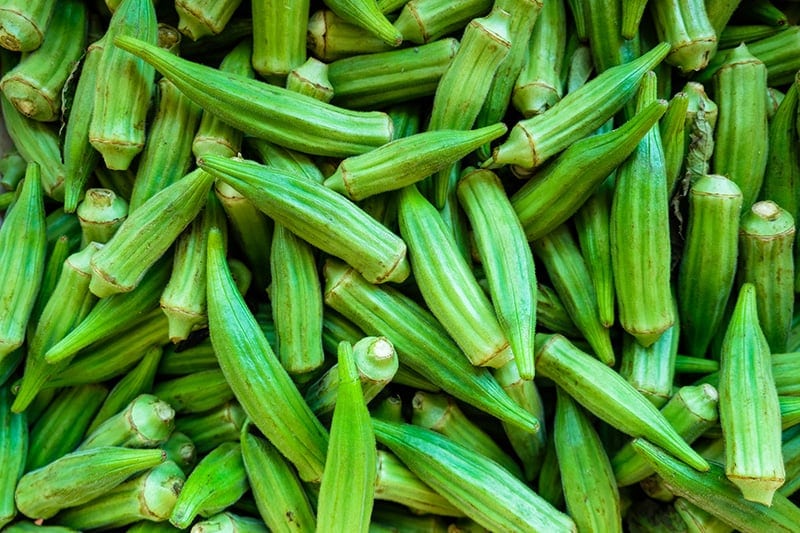
Okra is quite an odd veggie to many, but for people in certain regions, it’s a healthy green staple. Its claim to fame stems mainly from hearty Cajun cuisine, but it’s also common in vegetarian dishes worldwide including Italian, Indian, Lebanese, Japanese, and Armenian food.
Not only is okra a unique and surprisingly versatile vegetable to add to the recipe rotation, but it is super nutritious and deserves its spot amongst the coveted ranks of green foods everywhere.
Find more healthy ingredient guides here.
What Is Okra?
Okra is a green vegetable originally from Africa that comes into season during the warmer months of the year. It’s often called ‘ladies finger’ due to its uncanny resemblance to a finger (creepy!) and ‘gumbo’ which comes from its association with the famous Cajun dish.
It’s also popular in the Middle East and some parts of the Caribbean. In the United States, you’re hard-pressed to find it in restaurants outside of the south! If you ask me, it’s far more versatile than we know.
First, the entire plant can be used which makes it a rather valuable crop to many cultures and backyard green thumbs. All parts of the okra plant are edible including the pod (the finger), seeds, flowers, and leaves.
It’s also known to survive extreme heat waves and is a notoriously drought-resistant crop. This is great news for resourceful gardeners all over. Moreover, okra is likely a staple crop in cultures around the world considering its hardiness and edibility.
Even if you’re not participating in the ‘nose-to-tail’ veggie eating ritual of growing it yourself, the pod alone has many uses. Pickled okra is an option for preserving the harvest. It can be eaten raw, stuffed and cooked like a tiny pepper, roasted, or sliced and sauteed into gumbo or stew.
When the okra pod is cooked, it creates a sort of goo that is typically beneficial to thickening the sauce it’s being cooked in. We’ll talk more about the slime factor later. For now, I’ll just say that okra is rather talented at multitasking!
What Does Okra Taste Like?
Okra does not taste quite like any other vegetable! It’s truly one of the most unique plant foods in terms of both taste and texture which of course means it’s not for everyone. However, it is worth a try.
It’s a little bit grassy like leafy greens, asparagus or green beans, and its texture most notably resembles eggplant or zucchini when sauteed or roasted until soft.
Much like zucchini, quickly sauteing okra keeps it quite crunchy and fresh. This is great for salads or a simple summer side. Slow-cooking or roasting it yields a tender, creamy bite. All in all, it is rather mild with no particularly strong flavour notes.
Okra Nutrition Facts
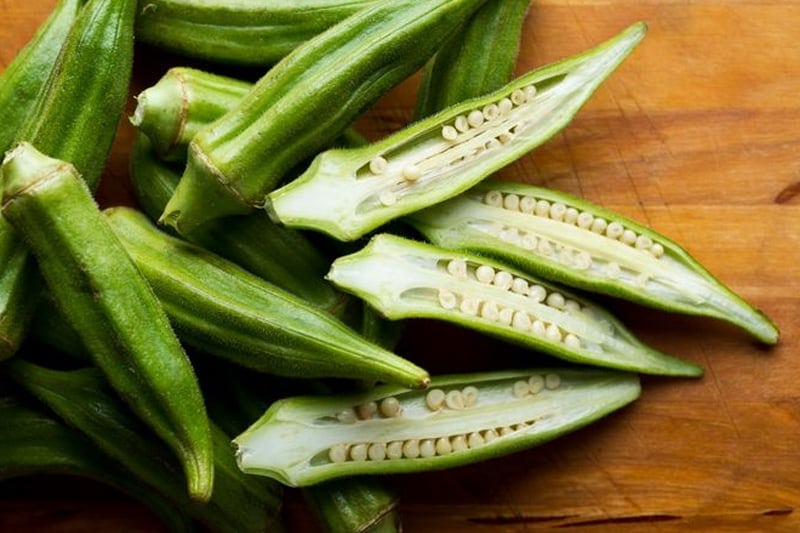
Per 1 cup (100 grams)
Calories: 33 kcal (great for weight loss)
Fat: 0,2 grams
Carbohydrates: 7 grams (good news for you low-carbers)
Protein: 1.9 grams
Fibre: 3.2 grams (excellent!)
Sugar: 1.5 grams
Sodium: 7 mg
Potassium: 299 mg
Vitamin A: 36 mcg (14%)
Calcium: 8%
Vitamin C: 23 mg (38%)
Iron: 3%
Vitamin B6: 10%
Vitamin K: 31.3 mcg
Magnesium: 57 mg (14%)
Okra Benefits
In case it’s not evident from the nutrition facts, okra is a fairly nutrient-dense food. In addition to everything it contains above, it’s also a source of niacin (a form of vitamin B3 essential for energy product, DNA manufacture, healthy skin and metabolising vitamin C and folate) in addition to minerals such as phosphorus, iron, and copper.
Okra and its many components also contain several antioxidant compounds including catechins and quercetin.
Catechins are found in superfoods like green tea and cocoa, and are also found in okra. This antioxidant-rich compound has been linked to the prevention and treatment of chronic illnesses such as Irritable Bowel Syndrome (IBS) by reducing the oxidative stress load on the colon and by demonstrating anti-inflammatory effects (1). The ability to reduce oxidative stress may also be linked to a decrease in cancer (2).
Quercetin – a plant pigment – is similarly found in green tea and has properties that are anti-carcinogenic, anti-inflammatory and antiviral (3).
In terms of vitamins, okra boasts a large amount of vitamin A, vitamin C, and vitamin K. We all know vitamin C is vital to good immunity. This is because it protects us from environmental oxidative stress (4). Vitamin C deficiency is highly disruptive for a whole lot of body functions. Vitamin K is essential for healthy blood clotting and strong bones. We typically get enough from food so that we don’t need to supplement. Lastly, vitamin A supports vision, immunity, and reproductive health.
The mucilage or the ‘goo’ – while being the most unappetising part for many – is another beneficial component. It is a sort of soluble fibre which aids in food digestion. Moreover, the slimy texture can aid in keeping digestive processes running even smoother and soluble fibre helps to lower cholesterol and protect against CVD and heart disease (5).
Okra Slime – What The Heck Is It?
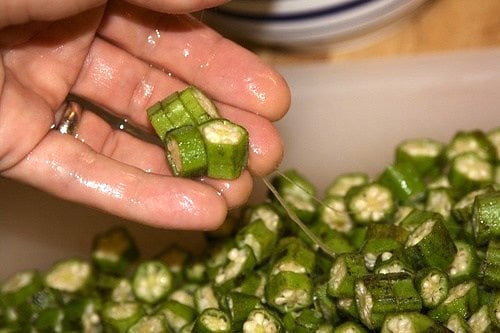
It’s been mentioned a few times in this article so far, but in case you’re having a hard time wrapping your head around eating something slimy, I figure we should address the elephant in the room.
First of all, there is nothing to worry about. Okra pods are known as mucilaginous. The slime is a normal part of cooking okra, and it can be quite beneficial both nutritionally and gastronomically. The goo contains some soluble fibre which is the stuff our body needs.
Reducing slime is on the radar of many chefs. Cooking okra for a long time – such as in the case of gumbo – releases and breaks down the mucilage and it acts as a substitute for cornstarch in the sauce, making it thick and giving it heft.
- Quickly frying okra doesn’t give the seeds a chance to get slimy which makes salads or deep-fried okra very appealing.
- Finally, adding an acidic element to the meal like citrus or vinegar can cut the slime factor significantly.
- I remember one other trick from an Italian friend of mine. He used to fill up the sink with water and soak the cut-up okra in water for 20-30 minutes, rinsing it a few times.
Buying & Storing Okra
First, you’ll want to know what to look for in the store. While there are many varieties of okra, the most common is green okra. The pods have a slightly fuzzy exterior. Purple okra is also fairly common. In areas where okra is grown in abundance, you will have more choices such as Cajun Delight or Louisiana Green Velvet. You can also grow these from seed.
Overripe okra tends to be stickier and gooier which will lead you to problems while cooking it. A perfect pod will be vibrant in colour without soft spots or blemishes. If it’s too solid, it’s likely underripe. You’re looking for firmness. In length, it should be around 3-4 inches.
Okra is a rather peculiar vegetable in some regions and many stores won’t carry it fresh – or at least not year-round. Fear not! You can almost always find it frozen amongst the peas and corn.
From fresh, you should store it in a paper bag or paper towel inside a vented plastic bag in the fridge. It should last around 4-5 days. If you would like to freeze okra for later use, simply trim off the stems, blanch the desired amount briefly, toss them in an ice bath to stop the cooking, and freeze laying flat. Then, once frozen, you can store the pods altogether in a bag.
How To Cook Okra
Okra can be eaten both raw and cooked like many vegetables. The ideal way of preparing it is determined by your personal preferences.
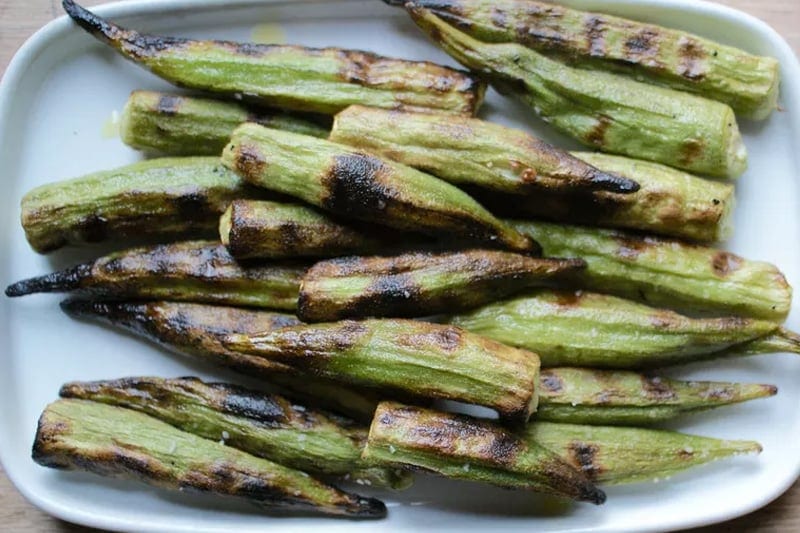
- Pickled okra. Okra makes for a good crunchy snack. Okra is typically frozen whole. You can do the traditional canning method or make quick pickles in the refrigerator.
- Salad with okra. Quickly sauteed and paired with a zingy dressing, this is a popular choice in some cuisines.
- Fried okra. What doesn’t taste deliciously deep-fried? While it’s not the best way to reap the health benefits, it is an awesome treat. You can pan-fry, shallow fry or deep-fry okra. Try this Grilled Okra from Spruce Eats.
- Roasted okra. Bring out the best in your veggies with salt, oil, and heat! Okra may make a good addition to sheet pan meals.
- Sauteed okra. Garlic, salt, and oil can bring okra to life. Pair with tomatoes or some seafood for a quick and easy meal/side.
- In gumbo. Stick to the basics and use okra in the dish it is known for. Furthermore, add it to other stew recipes for a similar effect if you’re feeling creative.
- Okra soup: Sauteed some onions, carrots and celery, add diced okra, garlic, chili, veggie stock and tinned tomatoes and cook until okra is tender. Finish with some fresh herbs for a hearty, Italian-inspired soup.
Okra Recipes
While many people know okra for its role in gumbo, it can be found in Lebanese and Japanese dishes too. These recipes highlight some of the main ways to cook okra and will inspire you to search for more.
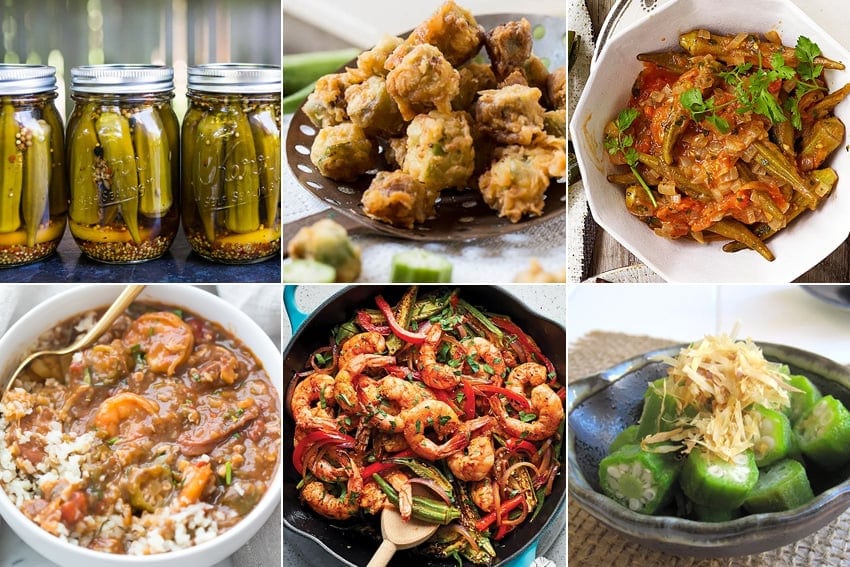
Pickled okra from Simply Recipes
Southern Fried Okra From Spicy Southern Kitchen
Stewed okra (Yakhnet Bemyieh) from Eating Well
Authentic paleo seafood gumbo from 40 Aprons
One-pan spicy okra & shrimp from Eating Well
Chilled Japanese okra salad from The Spruce Eats
Simple roasted okra from All Recipes
Okray: Yay or Nay?
Perhaps it’s time to add a few plants to your garden or give a rich and delicious gumbo a shot. If you’ve never cooked with this veggie before, perhaps this article and these delicious recipes will inspire you to indulge in this unique and surprisingly adaptable food.
A diet with a wide variety of fruits and vegetables is endlessly beneficial to preventing disease, managing blood sugar, having good digestion, glowing skin, and feeling energetic. Okra is simply another food to add to the list to make sure you’re getting all those good vitamins, minerals, and antioxidants.
Remember: embrace the slime!
References
Catechins and Their Therapeutic Benefits to Inflammatory Bowel Disease
The Role of Catechins in Cellular Responses to Oxidative Stress
Quercetin, Inflammation and Immunity
Save This Okra Article To Pinterest
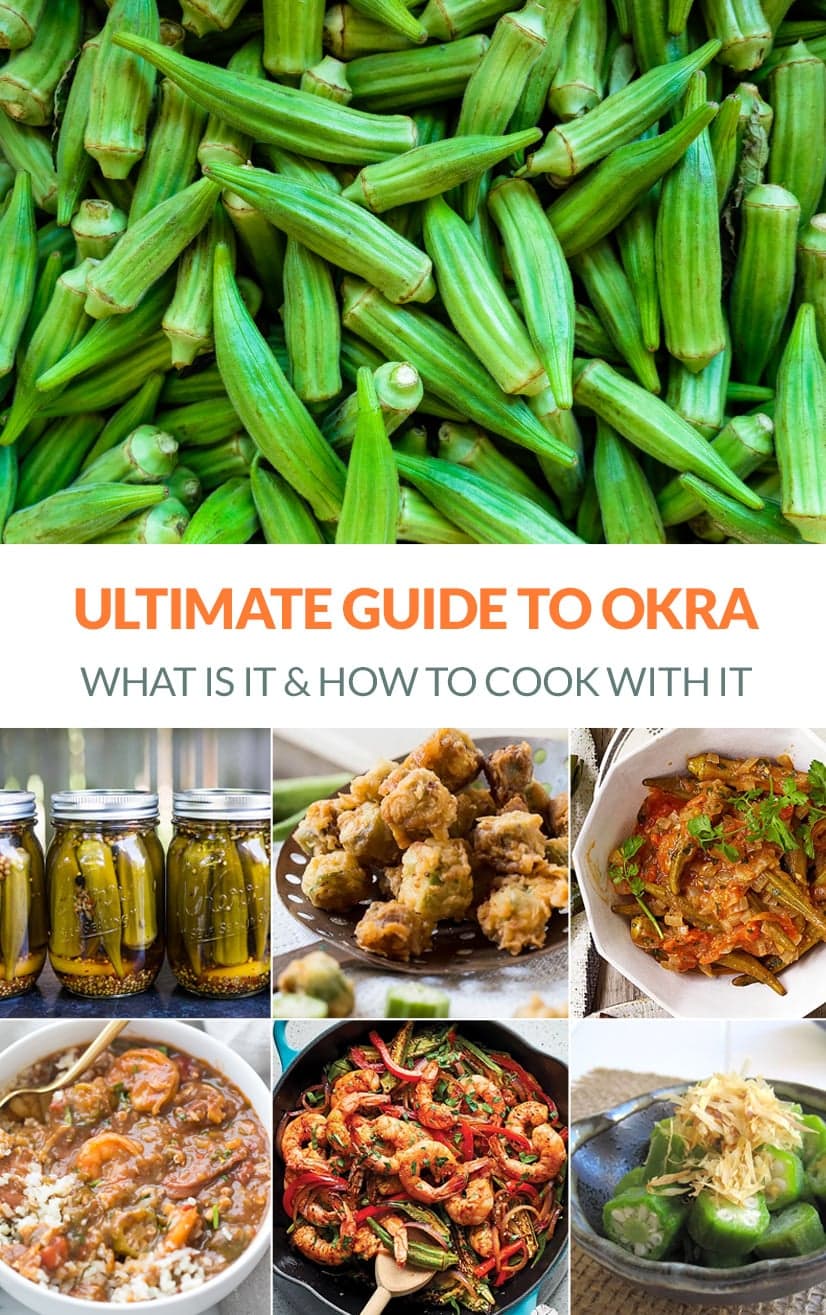


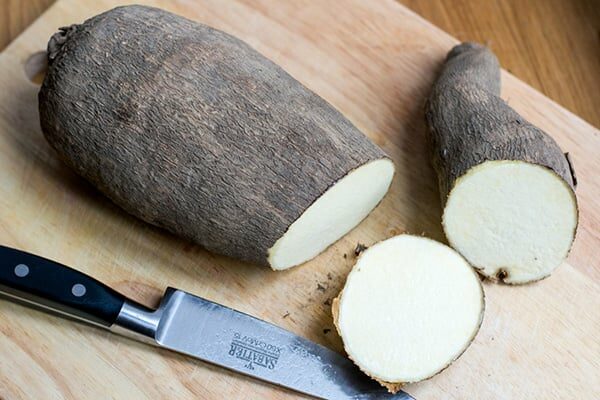

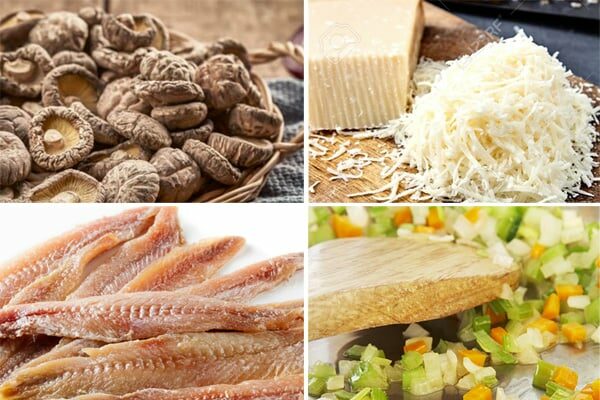
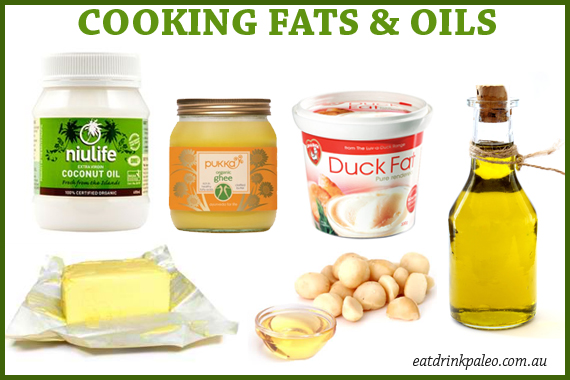
Very good and accurate write up.
Hope to watch on YouTube
Some one told me that I makes womens’ water ist true?